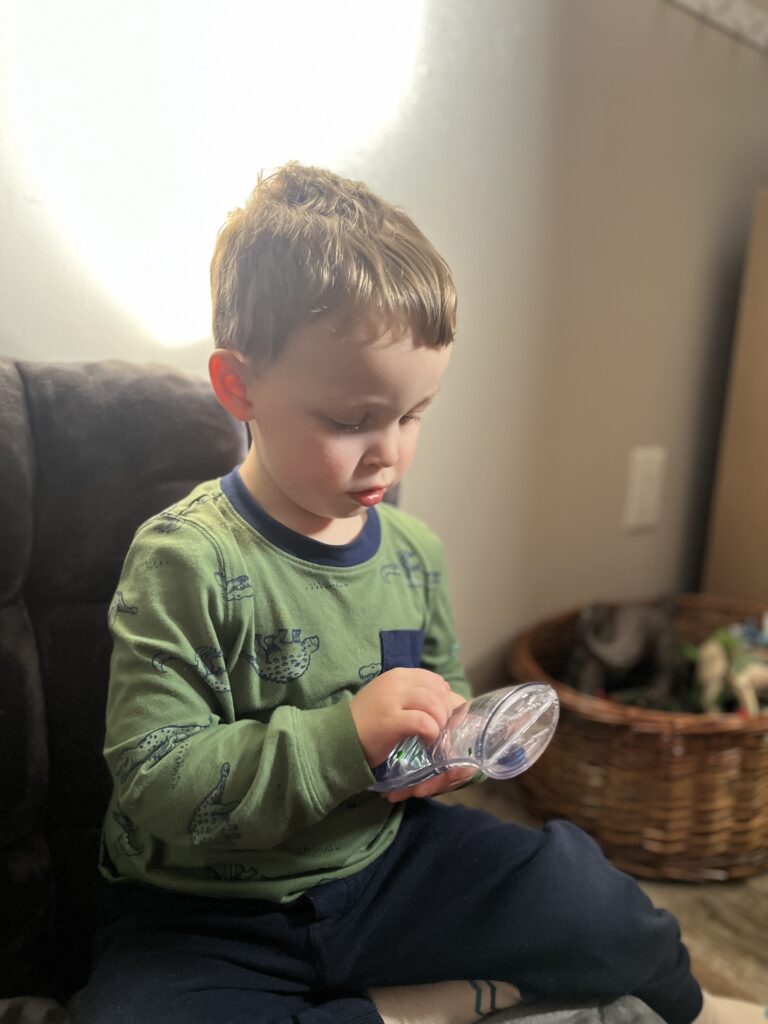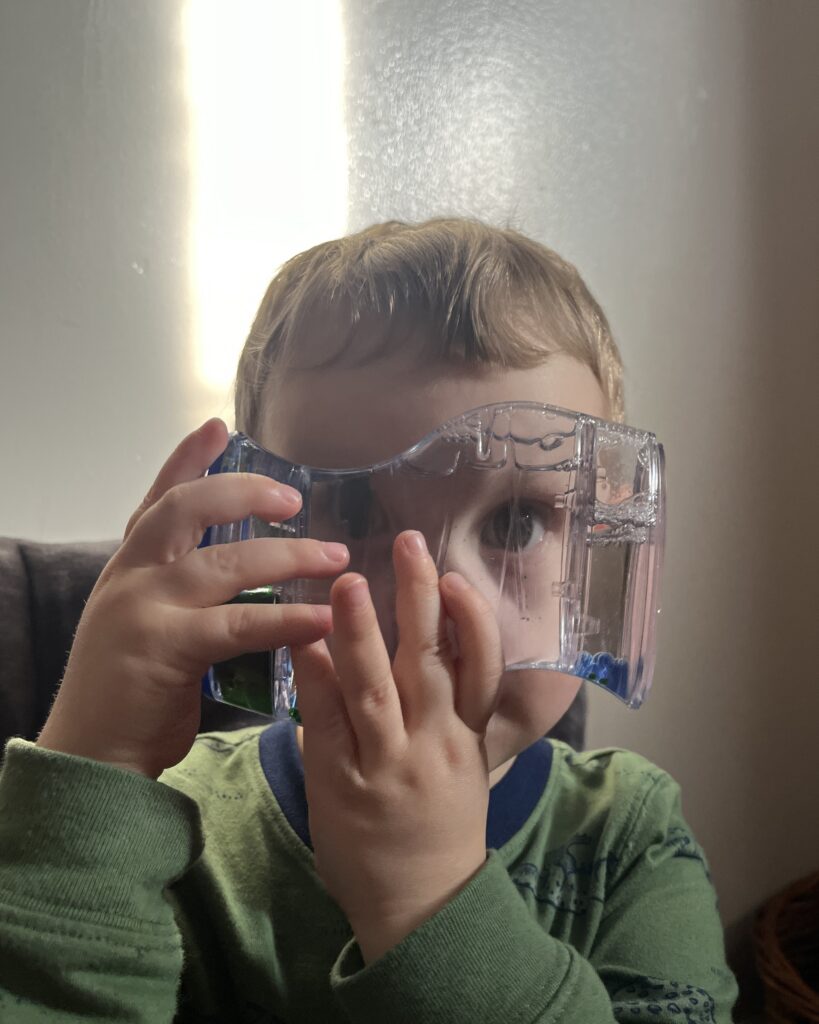B was playing by himself quietly at the Exploration Room while others were still asleep during the nap. The room is named as “exploration”, filled with toys of all kinds. Puzzles, magnetic wooden dress-up dolls, hot wheels cars, multi-level garage, dinosaurs, locks with keys, and so many more. I always have the thought that I will not be able to focus myself if I were a child in this room. Ben, however, seemed to know exactly what he wanted, and he went directly for the liquid motion bubblers as soon as he entered the room. He took two, one for himself, and another one for me.
I suggested B to show me how the bubbler works, and he began to shake the toy so hard that hundreds of little bubbles formed inside the toy, as well as many bubbles wrapped in oil. He then turned the toy upside down, and the bubbles began to move almost from all directions.
Top to bottom, bottom to top, left to right, right to left. Then slowly, small bubbles merged into big bubbles, and big bubbles into bigger bubbles.
B is the youngest child in the group, and his current language is mostly made of words of one syllabus, but I can notice that he was excited, as his words came out one by one: “Look! Bubbles! Big bubbles! Small…into big! Oh no! It stuck! Shake! Oop! It broke!” I followed his fingersas he pointed at the bubbles to me. As we continued to shake and observe, some other words came, and I could not understand what he meantby saying them. I heard him saying, “It’s hot! Hot bubbles! It’s hot, stand!” I tried to figure out by asking him, “what about the hot bubbles?”but I had no luck of getting an answer. Maybe that’s for next time to figure out with him.



My Reflection
I chose to document this moment because it is about language and communication. During this one to one interaction, the conversation wasmainly led by B, and I was attentive to his words and tried to understand what he wanted to show me. I noticed his interest in observing themovement of the liquid and bubbles, and more possibilities of exploration/activities could be developed from there, such as oil and waterscience/painting, soap bubble art, water play etc., and I am planning to bring some of them to the program in the coming weeks.
The “hot bubble” is still a mystery to me. I didn’t choose to extend the conversation with him at the moment, but it could be another possibilityto explore with him. Maybe when words cannot express what he want to say, there are other ways that I can try with him. How about drawing? What would happen if I asked him to draw hot bubbles? What if I asked him to explain the colour, or the shape, or the sound of the hot bubbles? This brings me back to BC ELF, saying that children use multiple modes of expressive language to communicate ideas, participate in relationships, and making meaning in their homes and communities. The expressive language could be movement, dance, constructing, drama, play, art, mathematics, science, music, and storytelling. I reflected on what I have said or done, and what I have not said and done, and realized that there are many ways to encourage children to express ideas except using the words.